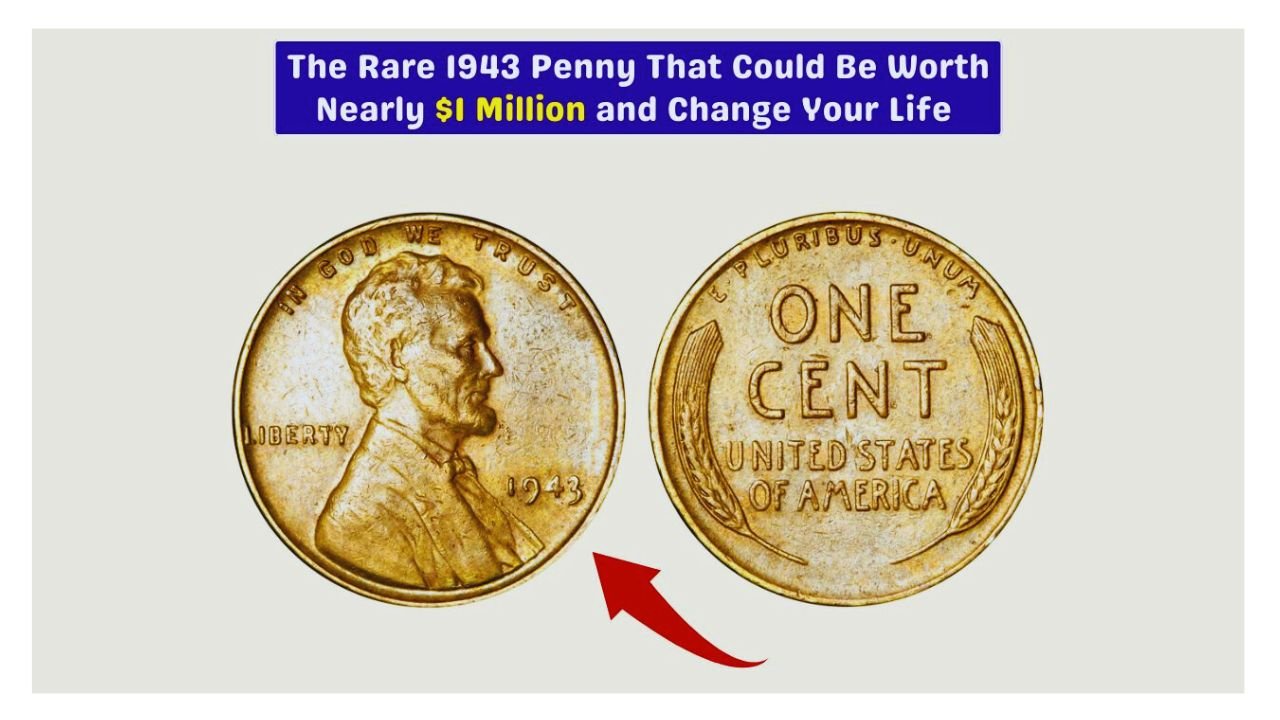Think pennies are just pocket change? Think again. Got One of These 1943 Pennies Some of the rarest pennies ever made in the U.S. could be worth more than your house—or even your whole retirement savings. If you’ve got a 1943 penny, you might be sitting on a small copper coin worth hundreds of thousands, or maybe even more. Here’s why these special pennies are so valuable, how to check if you have one, and what you should do next. Got One of These 1943 Pennies
The Rare 1943 Penny: How a Mistake Created a Treasure
During World War II, the U.S. Mint needed copper for wartime supplies. So in 1943, they switched from making copper pennies to steel pennies coated with zinc. But a few copper blanks accidentally made it through the minting process, creating the ultra-rare 1943 copper penny. Got One of These 1943 Pennies
Experts believe only a handful of these coins exist today. These rare pennies have sold for over $1 million at auctions. Some collectors think if a flawless 1943 copper penny with certain minting errors appeared, it could sell for several million dollars—or even more.
How to Spot a Rare 1943 Copper Penny
Checking your pennies is easy, and you don’t need fancy equipment. Here’s what to look for if you want to see if your 1943 penny is a valuable copper version:
| What to Look For | How to Check |
|---|---|
| Year | Make sure it says 1943 |
| Metal | Use a magnet—steel pennies stick, copper pennies don’t |
| Errors | Check for doubled numbers or letters |
| Condition | The shinier and less damaged, the better |
If you have a 1943 penny and it doesn’t stick to a magnet, it could be a copper one—and that alone makes it extremely valuable.
Why Condition and Errors Matter
Even if you have a 1943 copper penny, it doesn’t guarantee a massive payday. The coin’s condition plays a big role. Coins with lots of scratches, dents, or discoloration will sell for less than coins that look shiny and new.
But errors can make your penny worth even more. If the numbers or letters on your coin look doubled or blurry, that could mean it has a rare minting mistake called a “double die” error, which collectors love.
What to Do If You Think You Have One
If you suspect your penny is rare, don’t try to clean it—cleaning coins can scratch them and lower their value. Instead:
-
Store it carefully in a soft cloth or protective coin holder.
-
Take clear, close-up photos of both sides of the coin.
-
Visit a reputable coin dealer to get an in-person evaluation.
-
For the best results, send it to a professional grading service like PCGS or NGC for certification.
Certification can prove your penny’s authenticity and help you get top dollar if you decide to sell.
Should You Expect to Make Millions?
While rumors of billion-dollar pennies make headlines, the reality is that most rare 1943 copper pennies have sold for amounts between $100,000 and $1.7 million. That’s still enough to change most people’s lives! Even steel 1943 pennies with special errors can sell for hundreds or thousands.
So while you shouldn’t plan on retiring off a penny, it’s always worth checking your change. These coins have been found in old coffee cans, inherited collections, and even in rolls of pennies from the bank.
Check Your Change—It Could Pay Off Big
Before you dump your pennies into a coin machine or leave them in a tip jar, take a closer look. One small, copper-colored coin could hold the key to a huge payday. The 1943 copper penny is proof that a tiny mistake from decades ago can lead to a once-in-a-lifetime discovery today.
